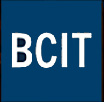
BCIT Physics Department

- To demonstrate Lissajous Figures.
Jules Antoine Lissajous (March 4, 1822 – June 24, 1880) was a French mathematician, after whom Lissajous figures are named. Among other innovations, Lissajous invented the Lissajous apparatus, a device that creates the figures that bear his name. In it, a beam of light is bounced off a mirror attached to a vibrating tuning fork, and then reflected off a second mirror attached to a perpendicularly oriented vibrating tuning fork (usually of a different pitch, creating a specific harmonic interval), onto a wall, resulting in a Lissajous figure.
A Lissajous figure is produced on an oscilloscope by taking two sine waves and displaying them at right angles to each other in the xy mode. In the following examples the two sine waves have equal amplitudes.
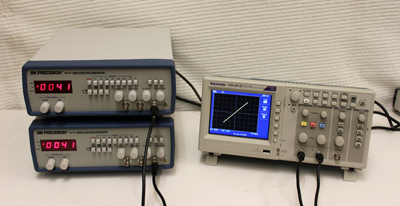 When the two sine waves are of equal frequency and in-phase, you get a diagonal line to the right. |
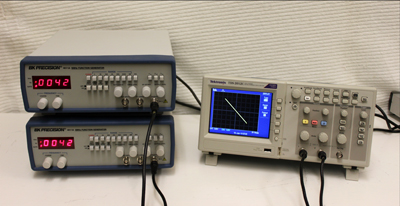 When the two sine waves are of equal frequency and 180 degrees out-of-phase, you get a diagonal line to the left. |
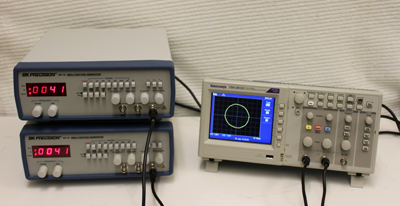 When the two sine waves are of equal frequency and 90 degrees out-of-phase, you get a circle. |
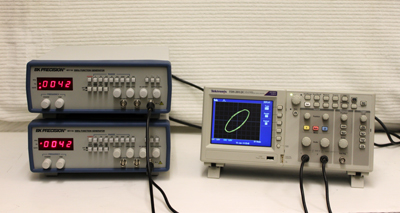 In this picture both input frequencies are identical, but the phase variance between them creates the shape of an ellipse |
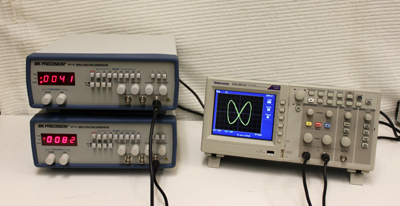 If the two sine waves are in phase but the frequency of the horizontal sine wave is twice the frequency of the vertical sine wave you get the pattern shown here. |
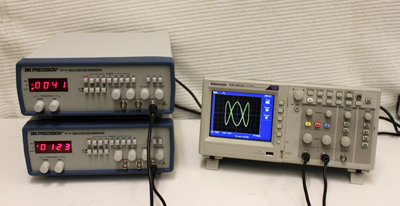 This shows the sine wave 90 degrees out-of-phase with the frequency of the horizontal sine wave three times the frequency of the vertical sine wave. |